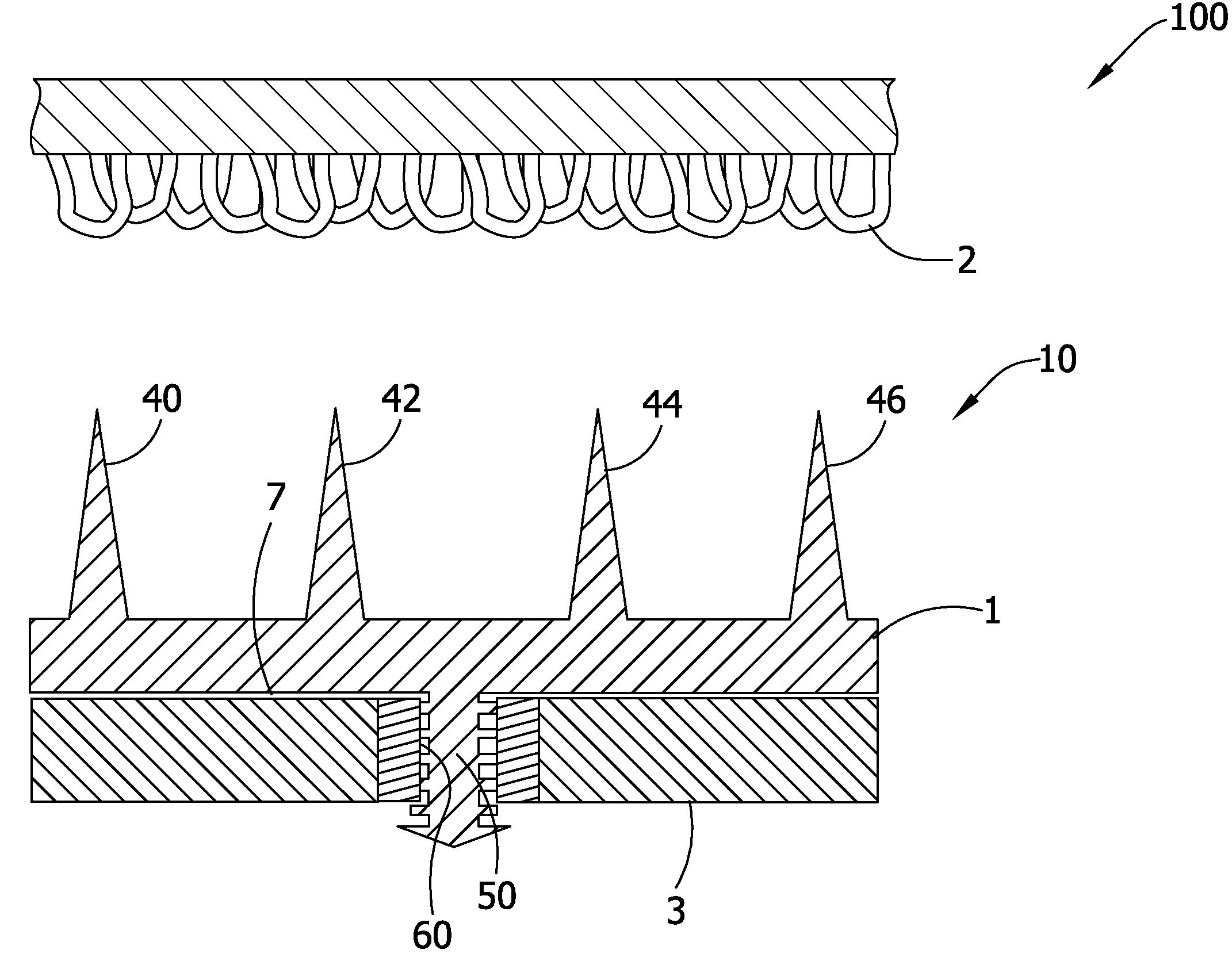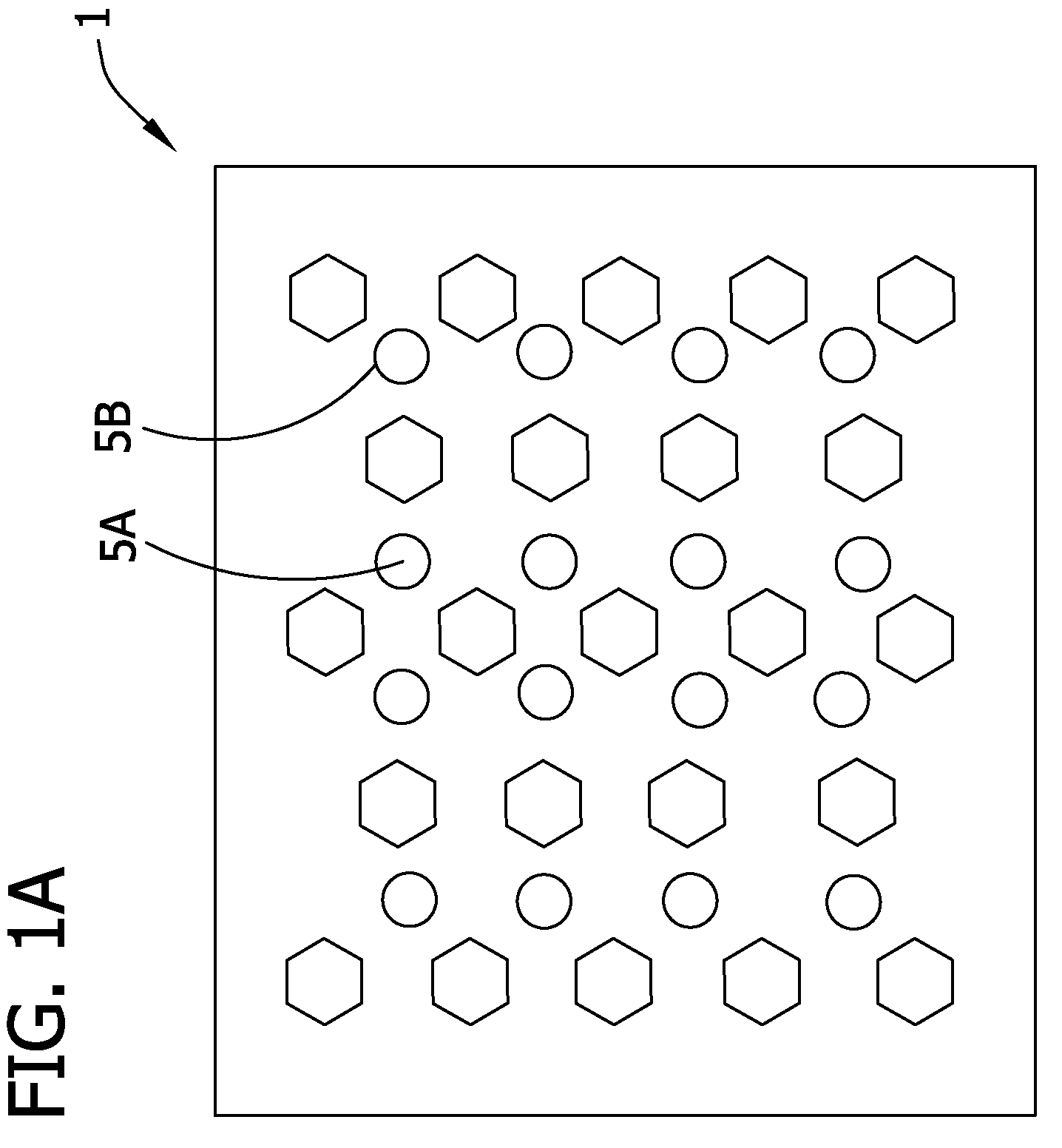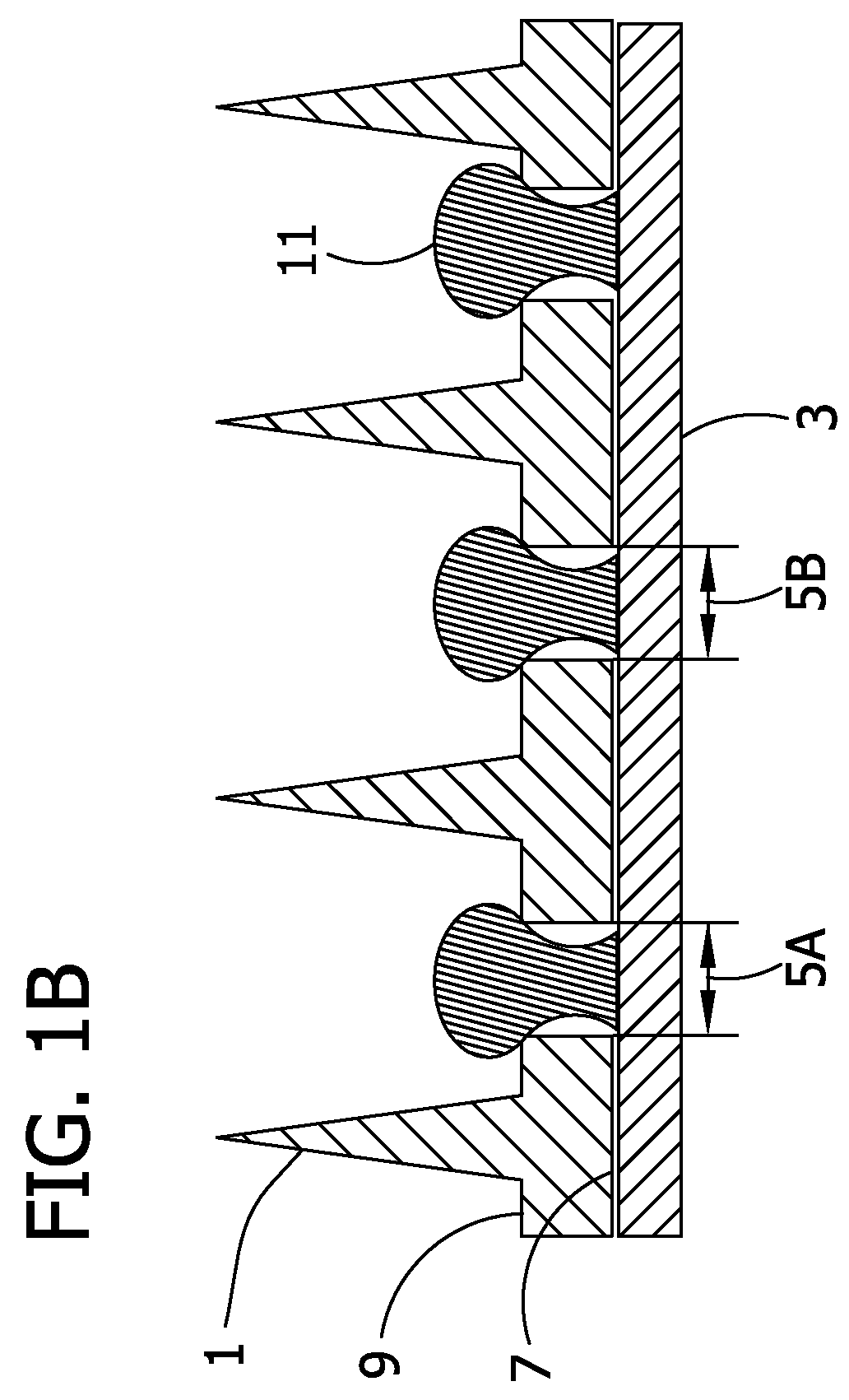Conductive hook and loop printed circuit board attachment
a technology of printed circuit board and hook and loop, which is applied in the direction of coupling device connection, sustainable manufacturing/processing, and final product manufacturing, etc. it can solve the problems of not appreciably increasing the cost of absorbent articles, material inability to satisfactorily attach devices to articles, and consumer electronics have spread into non-traditional product categories, etc. good electrical conductivity, high volume, and relatively cheap
- Summary
- Abstract
- Description
- Claims
- Application Information
AI Technical Summary
Benefits of technology
Problems solved by technology
Method used
Image
Examples
example 1
[0061]In this Example, a conductive connector attachment was produced in accordance with one embodiment of the present disclosure and its connection resistance was compared to a control attachment sample.
[0062]To produce the conductive connector attachment, round holes (approximately 2 mm to 4 mm) were made into a conductive hook material (commercially available as conductive VELCRO from Velcro USA, Inc., Manchester, N.H.) using needle point. The conductive hook material was then adhered to a one-sixteenth inch thick metal plate using a conductive epoxy, available as a silver two-part epoxy (resin and hardener with suspended silver particles) from Chemtronics, Kennesaw, Ga. Specifically, the surface of the metal plate was roughed up using a steel brush. Then, a few grams of mixed epoxy were placed on an epoxy patch on the conductive hook material. Pressure was applied to allow for the epoxy to push through the holes. The metal plate was then allowed to stand for approximately two ho...
example 2
[0065]In this Example, samples of conductive hook materials were directly soldered to printed circuit boards using conventional soldering mechanisms. Specifically, the samples were produced by melting, at a temperature of approximately 315° C. to 371° C. (600-700° F.) using a Weller soldering iron, the thermoplastic material of the conductive hook materials (commercially available as conductive VELCRO from Velcro USA, Inc., Manchester, N.H.) into a solder material (commercially available as Kester 24-6337-8213 (a 63% tin / 37% lead alloy) from Digikey electronics, Thief River Falls, Minn.) and contacting the conductive hook materials to portions of the printed circuit boards (i.e., solder pads, each having a size of approximately 3 mm×7 mm) to create mechanical and electrical connections.
[0066]Connection resistance from the top of the hooks of the conductive hook material to the base of the printed circuit board of each sample was measured as in Example 1. Connection resistances were ...
example 3
[0067]In this Example, a sample of conductive connector attachment including metal throughholes in the conductive hook material was produced and its connection resistance was tested.
[0068]To produce the conductive connector attachment, the female portion of metal button snaps were placed through a conductive hook material (available as conductive VELCRO from Velcro USA, Inc., Manchester, N.H.) to produce a throughhole connection. The solder material, as used in Example 2, was applied to the snap throughhole and to a portion of a printed circuit board (i.e., solder pad, having a size of approximately 3 mm×7 mm). The snap throughhole connector of the conductive hook material was then soldered to the printed circuit board.
[0069]Connection resistance from one solder pad on the printed circuit board to one inch removed from the conductive hook material, taken through the snap throughhole of the conductive hook material, was measured as in Examples 1 and 2. Connection resistance was appro...
PUM
 Login to View More
Login to View More Abstract
Description
Claims
Application Information
 Login to View More
Login to View More - R&D
- Intellectual Property
- Life Sciences
- Materials
- Tech Scout
- Unparalleled Data Quality
- Higher Quality Content
- 60% Fewer Hallucinations
Browse by: Latest US Patents, China's latest patents, Technical Efficacy Thesaurus, Application Domain, Technology Topic, Popular Technical Reports.
© 2025 PatSnap. All rights reserved.Legal|Privacy policy|Modern Slavery Act Transparency Statement|Sitemap|About US| Contact US: help@patsnap.com



